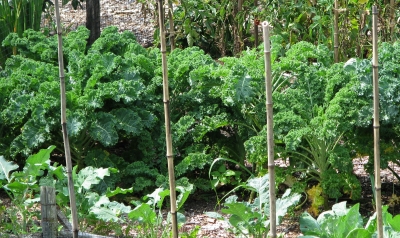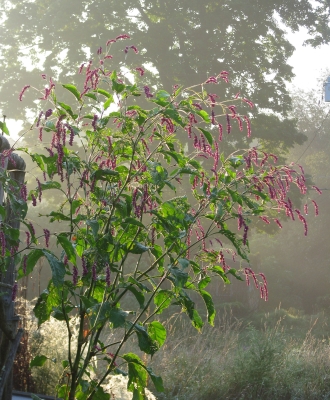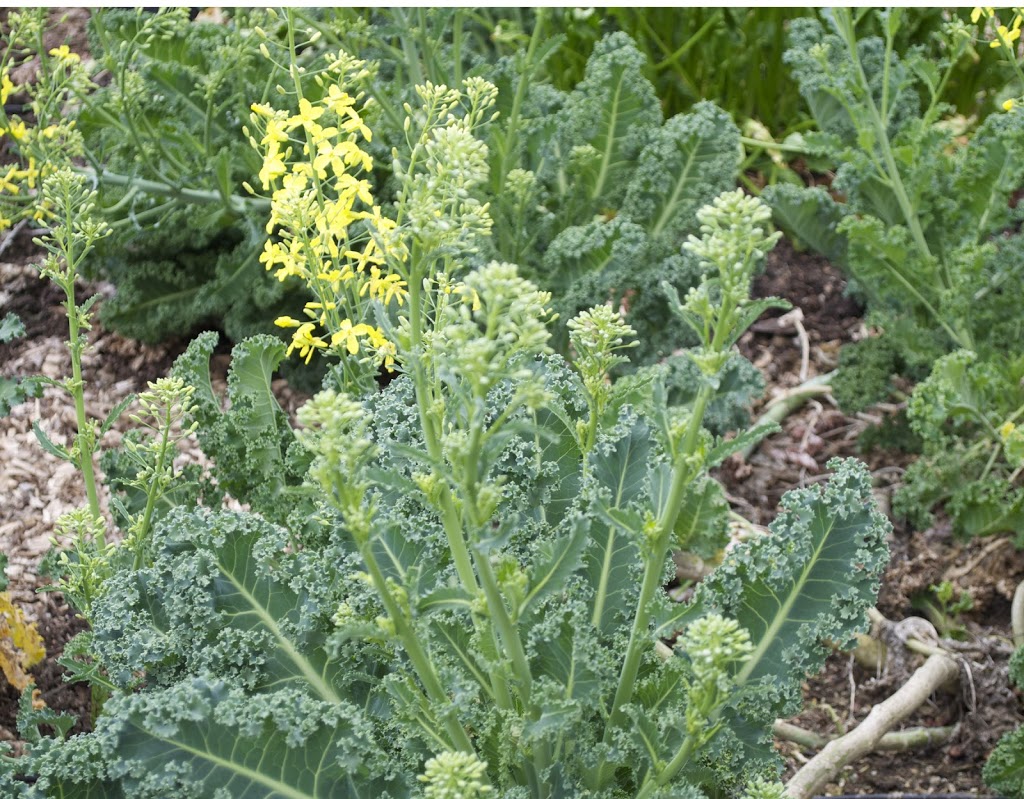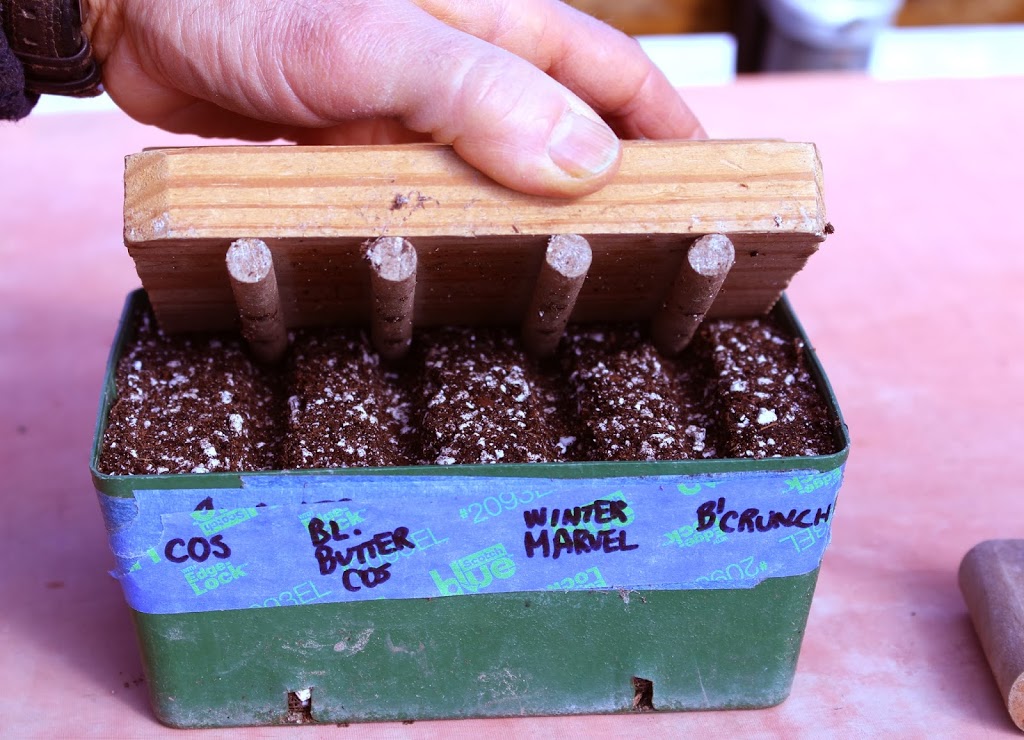GOOD LOOKS, GOOD TASTES
Kale’s Delights
I’m lucky enough to have a French window of two big, inward swinging panels out of which I can look over my vegetable garden every morning. Oddly enough, the garden bed that is catching my eyes these mornings for its beauty is the bed of kale plants.

No, it’s not a bed of one of the so-called colorful, ornamental kales, not even a reddish kale such as Russian Red. I mostly grow just plain old Blue Curled Scotch kale, which is no more bluish than any other kale, or any other member of the whole cabbage family for that matter. What catches my eye each morning is the frilliness of the leaves and how neatly they line up along the stalk. It’s pretty.
My vision could be swayed by the fact that kale is such a healthful vegetable, being especially rich in calcium and vitamin A. Or the fact that it’s so easy to grow. I sowed the seeds in March, put out transplants in early May, have been harvesting it since the end of May, and will continue to do so probably well into December. (Another bed of kale, which I seeded right out in the ground at the end of May, is also looking good.)
Kale is unlike other members of the cabbage family. Broccoli is past its prime once buds open into flowers. Cauliflower is over the hill once the florets sidle apart from each other. Cabbage splits if left too long. Brussels sprouts needs sowing in early spring but aren’t ready for eating until touched by frost at the other end of the growing season.
Kale doesn’t have a small window of time for optimum harvest; actually, no window. It just keeps growing taller, with more leaves, still tasting good at all stages.
The only thing kale needs protection from is rabbits and woodchucks, like most vegetables, and from the various cabbage worms. One or two sprays of the biological pesticide Bacillus thurengiensis (sold under such trade names as Thuricide and Dipel) is all that’s needed for the worms, or nothing, especially in a year like this when worms were pretty much absent.
What more could I ask for from a plant: flavor, health, and beauty?
Free Kisses
I take it upon myself to personally promote the revival of an old-fashioned flower: kiss-me-over-the-garden-gate (Polygonum orientale). It’s big, it’s beautiful, and it’s distinctly old-fashioned.
If you know the weed called smartweed, you have a hint of what kiss-me-over-the-garden-gate looks like. Smartweed is a trailing weed whose flowers look like small droplets of pink dew at the ends of its stems. Kiss-me-over-the-garden-gate looks like smartweed on steroids, with “droplets” the size of bb’s. Rather than trailing, the plant rises with robust arching stems to more than seven feet high. It’s just the height and form for growing next to a garden gate, which is where my plants grow.

Kiss-me-over-the-garden-gate is a little hard to get started because the seeds germinate slowly and erratically. My plants thankfully lived up to their reputation of being self-seeding annuals, and those self-seeding plants come up more robustly than the few coddled seedlings I used to plant out each spring.
It’s self-seeding habit is sufficiently restrained for me. All I do each spring now is to weed out the few extra plants, as well as those that stray too far from the garden gate.
Ever Green Onions
For many years, in addition to starting onions from seed (sown in February!), I also went the more conventional route and bought a few “sets” for planting. Sets are those small bulbs that grow first to become scallions, which are mostly leaf, then go on to fatten into bulbs that can be harvested and stored.

This year, instead of planting sets for scallions, I grew bunching onions, yet another type of onion, one that never ever makes fat bulbs. During the growing season, slender new scallions are produced around the bases of older ones. Left outdoors, they will perennialize and multiply by offsets year after year.
I set out transplants back in early summer grown from seeds sown in spring. Even now, these scallions still look like scallions, some larger, some smaller, depending on how crowded they are to each other. No matter their size, they’ve all been flavorful right through summer and on into fall, maintaining all the time their scallion character.




I live just a few miles away in Cottekill, and the cabbage moths/worms were awful this year!
Winter sure is coming on fast! Morning temps are in the mid 40’s now. My kale has gone to flower and I’m leaving it for the bugs. My 4 Swiss Chard plants are still putting out some nice leaves. I crave greens & beans at this time of year.
Mid 40s? That’s subtropical!:)
When my bunching onions flower, I pulled the small bulb up and let them air dry and replant for a new crop of onions. Haven’t sown seed for them in years.